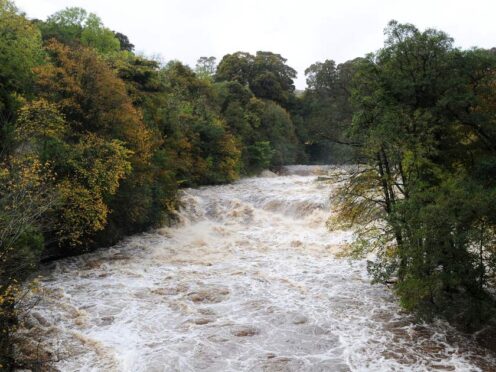Three-quarters of UK rivers were found to be in poor ecological health by citizen scientists who took samples from waterways across the UK.
Thousands of people measured their local water quality between June 7 and 10, collecting 1,300 datasets as part of the Great UK WaterBlitz campaign organised by environmental charity Earthwatch Europe.
They tested for levels of two polluting nutrients: nitrate and phosphate, which are commonly present in domestic and industrial waste and sewage, as well as in the fertilisers that wash off farmland.
High levels of nutrients can cause excessive plant and algal growth, high levels of bacteria, and decreased oxygen levels in the water, affecting plants and animals.
Earthwatch said 75% of tests showed the rivers tested across the UK were in poor ecological health, rising to 89% in the Thames and Anglia regions.
Hertfordshire and Cambridgeshire had the worst water quality, with 91% and 89% of unacceptable levels of nutrient pollution, according to the findings.
But Derbyshire and Northumberland had the least nutrient pollution, with both counties having 0% unacceptable data sets.

Sasha Woods, the charity’s director of science and policy, said: “These results are truly disturbing – there are no parts of the UK unaffected by nutrient pollution.
“The picture around London and the Thames river basin is particularly dire.
“Our rivers have been historically stressed by farming, and we’re seeing this being made worse by inappropriate or limited sewage treatment.
“The Government has committed to protect 30% of land for nature by 2030 – that will be meaningless if the rivers and streams running through the land, the arteries of life, are diseased.”
The charity said the testing programme mirrors some of the outcomes from a recent report by the Office for Environmental Protection (OEP), which found “most of England’s water bodies are in an unsatisfactory state”.
Dr Woods said the citizen scientist project, thought to be the largest ever of its kind in the UK, has “enabled people to better understand the health of their local rivers and catalysed grassroots action”.
She added: “We want to see more citizen science testing and better use of this data by bodies such as the Environment Agency to help build a more positive future for our rivers.
“The next government must commit to a national strategy for freshwater that includes all forms of pollution and is backed by a properly-resourced organisation that makes use of rich citizen science data.”
The latest official Water Framework Directive monitoring shows that 17% of water bodies are in a poor state, 63% are in an average state (moderate) and 16% are in good state.
The Department for Environment, Food and Rural Affairs is unable to comment due to pre-General Election period restrictions.
